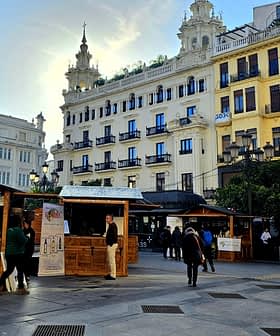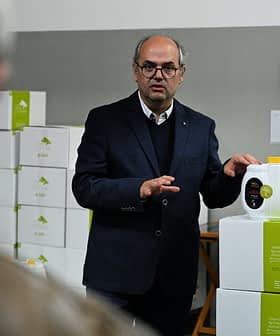Often through legal loopholes and sleight of hand producers and bottlers have for years managed to use three magic words that cause consumers to pay up to twice as much for a liter of olive oil.
So while the olive oil pricing crisis grinds through its fourth year and producers in Europe continue to sell olive oil for less than it costs them to make, the average price paid for extra virgin olive oil labelled “Made in Italy” continues its incredible climb (up 45 percent in a recent IOC report).
But suddenly olive oil companies in Italy and Spain and distributors of European foods are introducing olive oils with a surprising new selling point: Made in California.
Last month at the Fancy Food Show in Washington, the Italian olive oil producer Colavita launched olive oils made in California and Australia; Star Fine Foods, a division of Spain’s Borges Group, has introduced an Arbequina from California’s Central Valley; Zoe, an importer and distributor of Mediterranean products, is offering a new California extra virgin, and other major European companies are in the process of developing their own California brands and production facilities.
What’s going on?
Even if they are the new kids on the block, American and Australian olive oil producers have been playing hardball. They’ve underwritten studies critical of imported oils, lobbied for new standards that make life harder for European producers and they’ve been all over the media to urge everyone to buy domestic.
But it’s not just in the New World where studies and investigations have been highlighting quality issues with Mediterranean brands. Media everywhere seem to be piling on with taste tests, reports of scandals and analyses of supermarket olive oils made in Spain, Italy, Portugal and Tunisia.
California’s mostly small producers craft high quality olive oils that have enjoyed growing popularity among consumers and EVOO competition judges alike, not to mention a clean record.
So now, some of the biggest olive oil companies in the world are saying “okay, we can do California, too.”
When asked about Colavita’s new launch, an executive from a major California olive oil company was fine with the idea, saying if an Italian company wanted to spread the word about the high quality of California olive oil, all the better for him (the executive said his company was not the one supplying Colavita, for example, but said there were only a small number of companies of sufficient size to do so).
Another outcome of Big Oil’s California dreamin’ will be a higher public awareness that there are differences in olive oils, and that origin matters. That kind of added value might be what ultimately saves producers everywhere.
But it also confuses matters, and confusion has long been exploited by unscrupulous operators. Even if an Italian producer, for example, has olives pressed into good oil in Modesto, California, what happens between there and where it is consumed is still anyone’s guess.
In fact, what you hear most from Australian and Californian producers is not that their products are better because they’re from Victoria or the Central Valley, but because they’re fresh and local — points that clearly resonate with consumers these days.
But by the time Colavita ships EVOO from the Port of Oakland or Los Angeles, half-way around the world to its bottling plant near Rome, and back again to one of the 85 countries where the brand is distributed, the olive oil will have logged a lot of miles.
If European mega producers bring the same practices to their California outposts that got them in trouble in the first place, Made in California could become another watered-down origin designation.
The new products underscore the challenges of an industry undergoing sweeping changes, and the growing opportunities in the world market when most consumers are only beginning to learn about olive oil and what it means for health and the enjoyment of foods.








